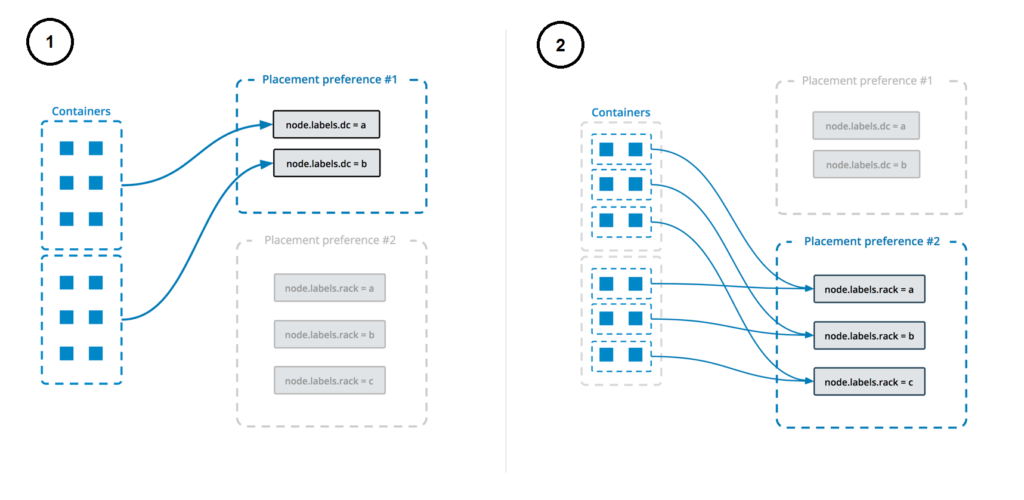
When updating a service with `docker service update`, `--placement-pref-add`
appends a new placement preference after all existing placement preferences.
`--placement-pref-rm` removes an existing placement preference that matches the
argument.
### Configure a service's update behavior
When you create a service, you can specify a rolling update behavior for how the
swarm should apply changes to the service when you run `docker service update`.
You can also specify these flags as part of the update, as arguments to
`docker service update`.
The `--update-delay` flag configures the time delay between updates to a service
task or sets of tasks. You can describe the time `T` as a combination of the
number of seconds `Ts`, minutes `Tm`, or hours `Th`. So `10m30s` indicates a 10
minute 30 second delay.
By default the scheduler updates 1 task at a time. You can pass the
`--update-parallelism` flag to configure the maximum number of service tasks
that the scheduler updates simultaneously.
When an update to an individual task returns a state of `RUNNING`, the scheduler
continues the update by continuing to another task until all tasks are updated.
If at any time during an update a task returns `FAILED`, the scheduler pauses
the update. You can control the behavior using the `--update-failure-action`
flag for `docker service create` or `docker service update`.
In the example service below, the scheduler applies updates to a maximum of 2
replicas at a time. When an updated task returns either `RUNNING` or `FAILED`,
the scheduler waits 10 seconds before stopping the next task to update:
```console
$ docker service create \
--replicas 10 \
--name my_web \
--update-delay 10s \
--update-parallelism 2 \
--update-failure-action continue \
alpine
```
The `--update-max-failure-ratio` flag controls what fraction of tasks can fail
during an update before the update as a whole is considered to have failed. For
example, with `--update-max-failure-ratio 0.1 --update-failure-action pause`,